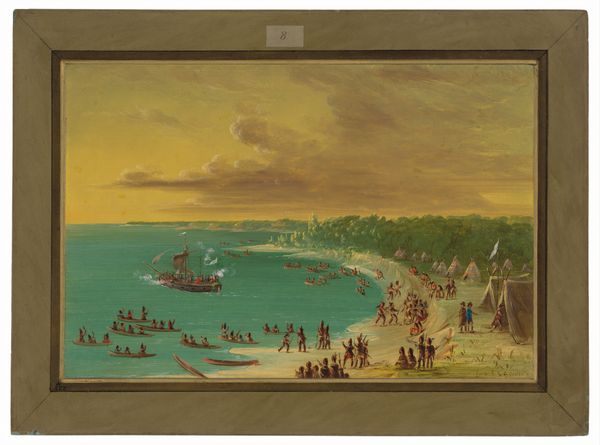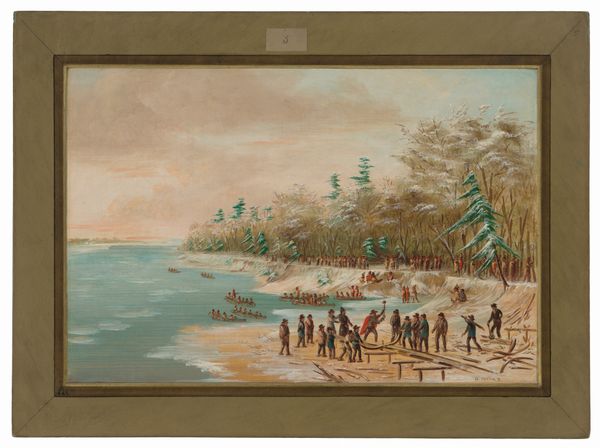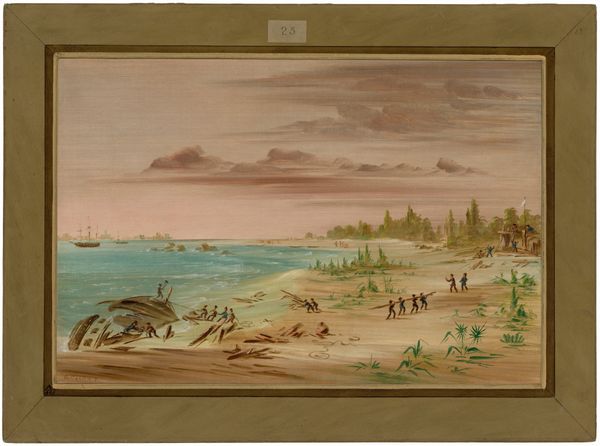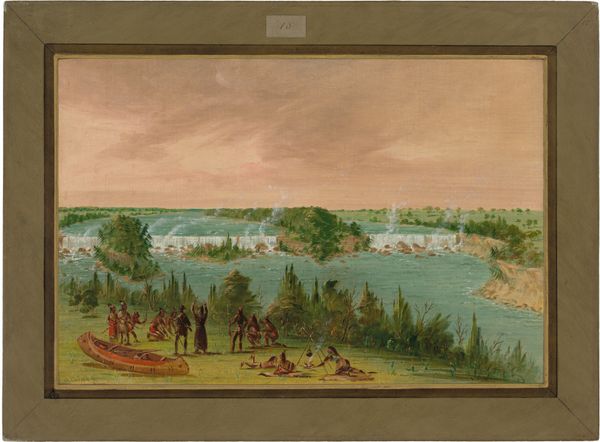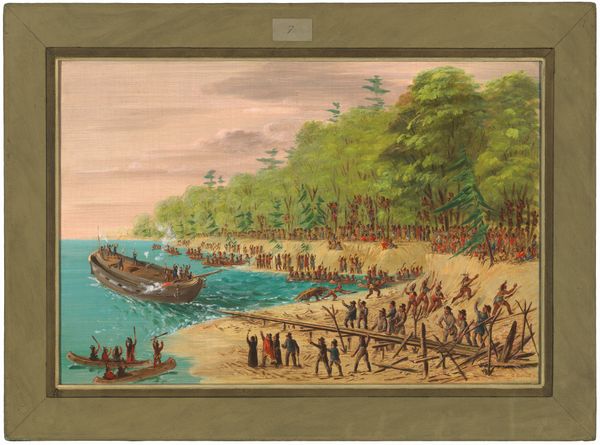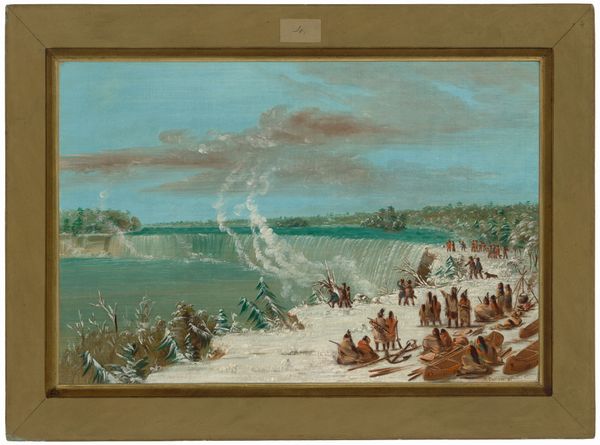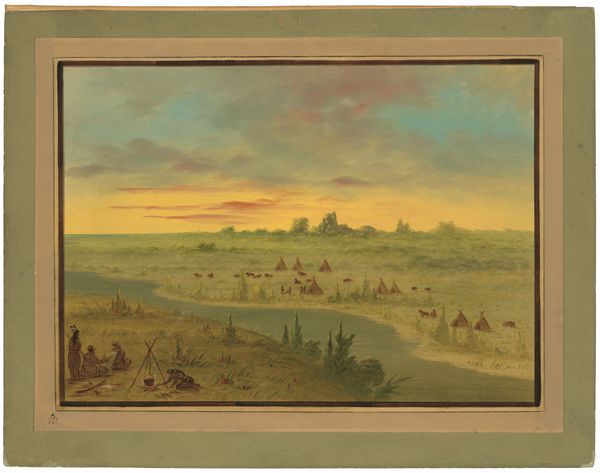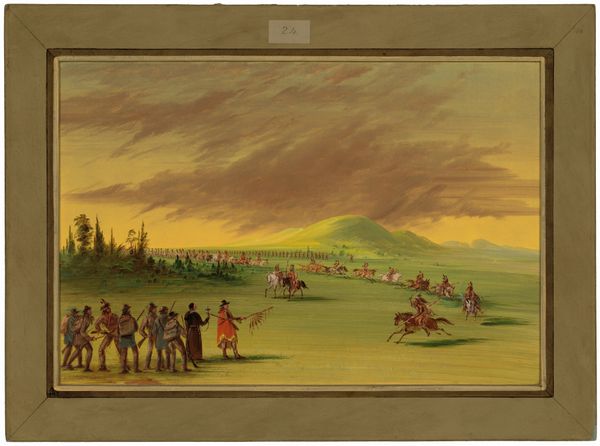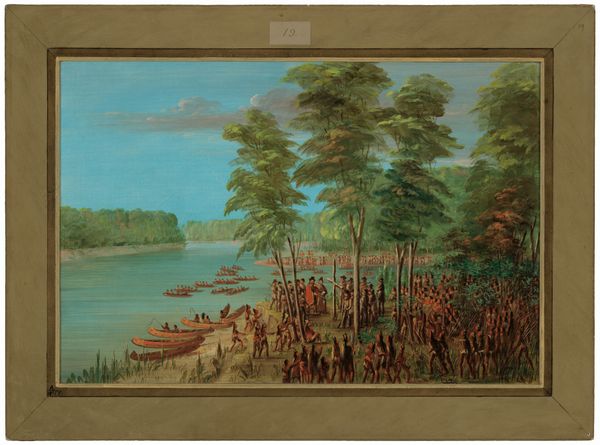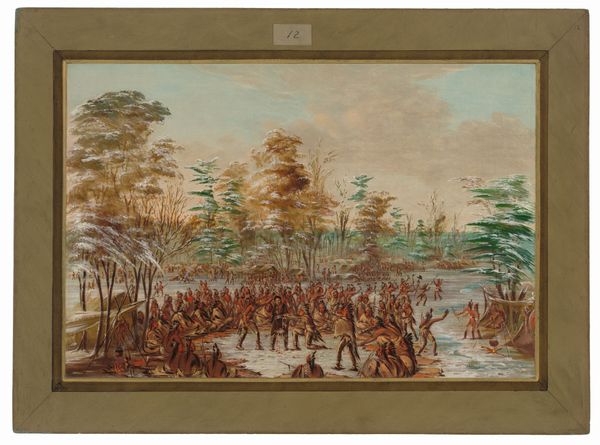
La Salle Claiming Louisiana for France. April 9, 1682 1847 - 1848
0:00
0:00
#
impressionist painting style
#
impressionist landscape
#
handmade artwork painting
#
fluid art
#
coffee painting
#
painting painterly
#
watercolour bleed
#
watercolour illustration
#
botanical art
#
watercolor
Dimensions: overall: 37.8 x 56.4 cm (14 7/8 x 22 3/16 in.)
Copyright: National Gallery of Art: CC0 1.0
Curator: Standing before us is George Catlin’s watercolor, "La Salle Claiming Louisiana for France, April 9, 1682," completed between 1847 and 1848. Editor: The first impression is quite unsettling; the looming clouds above feel almost accusatory. And the cross planted into the soil feels like a brand. Curator: Precisely. Consider the context: Catlin created this work well after the historical event, amidst the fervent debates around Manifest Destiny. It forces us to question whose "claim" we are truly seeing, and at what cost. How are those historical implications expressed visually? Editor: Notice the arrangement. La Salle stands prominently, claiming the land, while the Indigenous peoples are relegated to the periphery—some sitting, some gesturing, their expressions obscured. Their presence is undeniably…passive, resigned. The cross is the clearest visual element that dominates everything. What I'm struggling to interpret are the reactions of the Native population; their facial expressions are not clearly revealed, or even what each of their functions in the illustration seems to be. Are there additional religious indications? Curator: The cross functions as a powerful symbol—it marks not just religious conversion but a complete societal upheaval. And consider what lies beneath that imposed symbolism. How do you read the depiction of the landscape itself? The land which now undergoes transition... Editor: The watery landscape and vegetation create an idyllic picture...or, at least, an "uninhabited" natural one. It becomes a silent witness. However, juxtaposed against that seemingly benign scene, this scene highlights the cultural clashes that must have ensued once Europeans had penetrated deep inland. It has a bittersweet effect on the composition that's unsettling but also accurate. I am drawn to this use of "visual-emotional storytelling" between its land and symbols. Curator: Yes, the symbolism speaks to the power dynamics at play. In terms of identity and gender, the Indigenous figures here lack agency, caught in a historical moment not of their making. Their muted presentation underscores a broader history of silencing and dispossession, which is often under-analyzed by many artistic critiques. Editor: Indeed, looking at the arrangement again—it's like watching two entirely different worlds meet, each under dramatically different sets of understanding. One anchored and stoic; one is clearly overwhelmed and not able to grasp exactly what lies ahead. Curator: Reflecting on this piece through a modern lens underscores how visual narratives can either reinforce or challenge colonial power structures. Hopefully, that intersection continues. Editor: I leave with a clearer vision on the cultural memories embedded in such works. I am drawn again to that skyline. What it silently acknowledges will soon change.
Comments
No comments
Be the first to comment and join the conversation on the ultimate creative platform.
